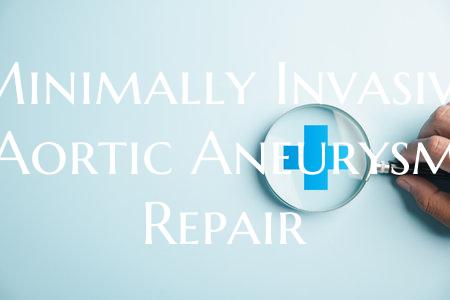
Minimally Invasive Aortic Aneurysm Repair
Minimally Invasive Aortic Aneurysm Repair
Aortic aneurysms are a serious medical condition that involves the weakening and ballooning of the walls of the aorta, the main artery that carries blood away from the heart to the rest of the body. If left untreated, aortic aneurysms can potentially rupture, leading to life-threatening bleeding.
In the past, traditional open surgery was the primary treatment option for aortic aneurysms. However, advancements in medical technology have led to the development of minimally invasive techniques for repairing aortic aneurysms, offering patients safer and more effective options with reduced recovery times.
Minimally invasive aortic aneurysm repair typically involves the use of endovascular stent grafts. During this procedure, a catheter is inserted into a blood vessel, usually in the groin, and guided to the site of the aneurysm. The stent graft is then deployed to reinforce the weakened area of the aorta and redirect blood flow, essentially sealing off the aneurysm and preventing the risk of rupture.
Compared to open surgery, minimally invasive aortic aneurysm repair offers several benefits. These include:
1. Lower Risk of Complications: Minimally invasive procedures are associated with lower rates of complications such as infection and excessive bleeding.
2. Reduced Recovery Time: Patients undergoing minimally invasive aortic aneurysm repair typically experience shorter hospital stays and quicker recovery times compared to traditional open surgery.
3. Improved Cosmetic Outcome: Since minimally invasive procedures involve smaller incisions, patients are left with minimal scarring post-surgery.
4. Less Pain and Discomfort: Minimally invasive techniques are less traumatic to the body, resulting in less pain and discomfort during the recovery period.
5. Long-Term Success: Minimally invasive repair of aortic aneurysms has demonstrated comparable long-term success rates to traditional open surgery.
However, not all patients are suitable candidates for minimally invasive aortic aneurysm repair. Factors such as the size and location of the aneurysm, as well as the presence of other underlying medical conditions, will need to be carefully evaluated by a healthcare provider to determine the most appropriate treatment option.
In conclusion, minimally invasive aortic aneurysm repair represents a significant advancement in the field of vascular surgery, offering patients a safer and more efficient treatment option for this potentially life-threatening condition. By leveraging cutting-edge technology and techniques, healthcare providers can now provide effective care with improved outcomes and enhanced patient satisfaction.